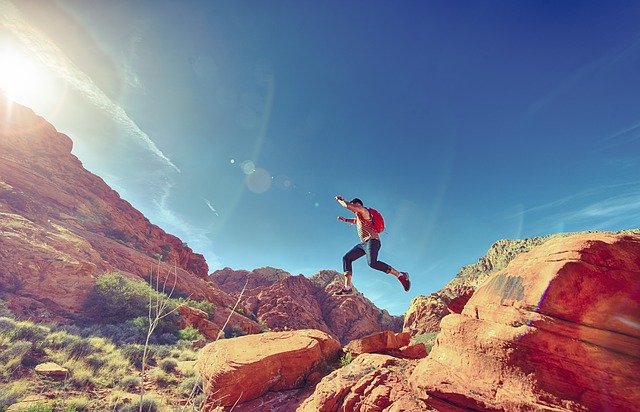
Have you hiked several trekking trails, camped out in a local forest park, and even signed up for a rock-climbing course? Then it’s time to conquer the mountain peaks. Learn how to prepare for a climb, whether you can use calisthenics exercises for training, and what equipment you should have with you.
Firstly, if you decide to climb the mountains for the first time, don’t do it yourself under any circumstances. Even the simplest regions require special knowledge. The skills you have acquired in school trips will not help you in challenging and life-threatening situations.
How to be physically prepared for ascending?
First rule: never go hiking with a cold or after a severe illness. During intensive physical activity and at low temperatures, chronic diseases can worsen. Experienced climbers are advised to visit a therapist or sports doctor before long hikes.
In addition, you need to think about the physical form. But you should not start pumping your abs and doing strenuous squats a week before the hike. It will only “score” your muscles and add discomfort in the mountains. Instead, get ready for long, and high-altitude climbs three months in advance. Running and body-strengthening exercises are best. Don’t forget about stretching. This is where calisthenics exercises come in handy. This will allow you to use your body to its total amplitude and reduce the risk of injury. Physical preparation for a hike in the mountains also involves the practice of hardening. This is important not only for those going to snowy peaks. A contrast shower will save you from headaches at altitude and help you get over mountain sickness faster.
Tips for preparing for climbing
Here are a few tips to prepare for your first altitude hike:
1. Don’t skimp on shoes
When hiking, your feet are your most important body part, so don’t skimp on your trekking shoes. There are plenty of online retailers such as FastSole that offer comfortable sneakers for every occasion, including hiking. Just have a quick browse on their website and you’ll find a wide array of sneakers that are perfect for the trails. Choose a pair that has good ankle support, a grippy sole, and waterproof materials. It’s essential to get your feet used to your new shoes, so wear them whenever and wherever you go: on workouts, shopping trips, and to work. This will help you avoid blisters and lost toenails. Stock up on several pairs of really good hiking socks (preferably a wool and nylon blend). They will absorb moisture and keep your feet dry.
2. Start walking more – right now
This is probably the most obvious advice. However, walking is the best way to prepare for a long distance in the mountains. You can start by walking in the city – begin with a short distance and gradually get closer to the distance of one day of the upcoming trekking. Then, you can take a one-day break to allow your body to recover. It would be great if you could walk four to six hours a day.
3. Strengthen your heart (and other muscles)
Along with long walks, incorporate other cardio exercises into your daily life – to strengthen your heart and other body muscles. For example, riding a bike is good for strengthening leg muscles, and swimming is great for all muscle groups. If you work out at the gym, pay special attention to workouts that strengthen leg and back muscles, with squats and lunges, as well as on ellipticals and exercise bikes.
4. Exercise in all weather conditions
It’s also unlikely that you’ll have ten days of perfect weather coming your way, so prepare for all conditions. Get out for a walk in all kinds of weather: cold, windy, rainy, warm, and wet.
5. Climb stairs every chance you get
Climbing the stairs or escalator on the subway is also good for strengthening your leg muscles, so take the stairs instead of the elevator every time you get home or get off the subway.
6. Exercise on different surfaces
Once you’re on the trail, it’s unlikely that you’ll be walking on flat sidewalks and parkways, so avoid working out exclusively on flat roads. Instead, try training on surfaces that will resemble trails on a track. If you’re headed to Everest or Kilimanjaro, try training on a steep, rocky, or loose slope. It’s essential to prepare your feet, ankles, and knees for the stress they will experience on the trip.
7. Take trekking poles to practice
When walking the loose trails of Kilimanjaro, trekking poles will be your best friends. They take the stress off your knees on the descents and give you extra support on the climbs. Take your trekking poles with you when you decide to walk – you need to get used to them. Nordic walking will make your workout more effective.
8. Walk with a backpack
You will be walking light on many trekking trails, but you will have to carry a small backpack with the essentials (camera, provisions and water, sunscreen, rain protection, etc.). To prepare for this, take a bag during your hiking workouts. Make it a little heavier than it will be on the hike.
